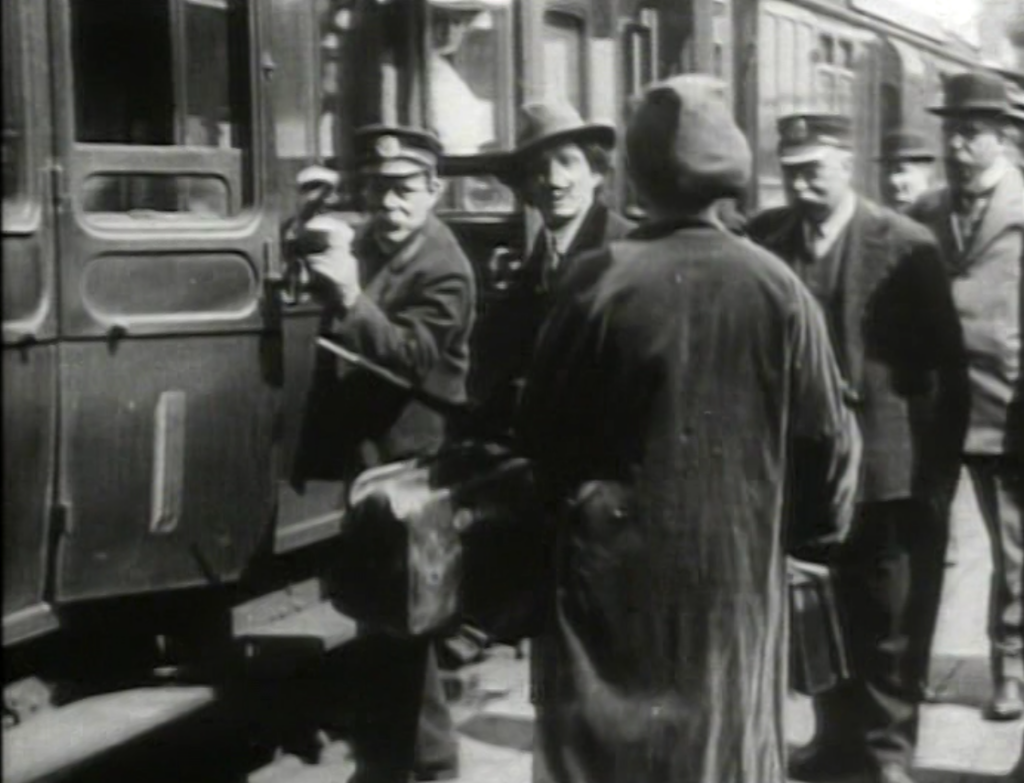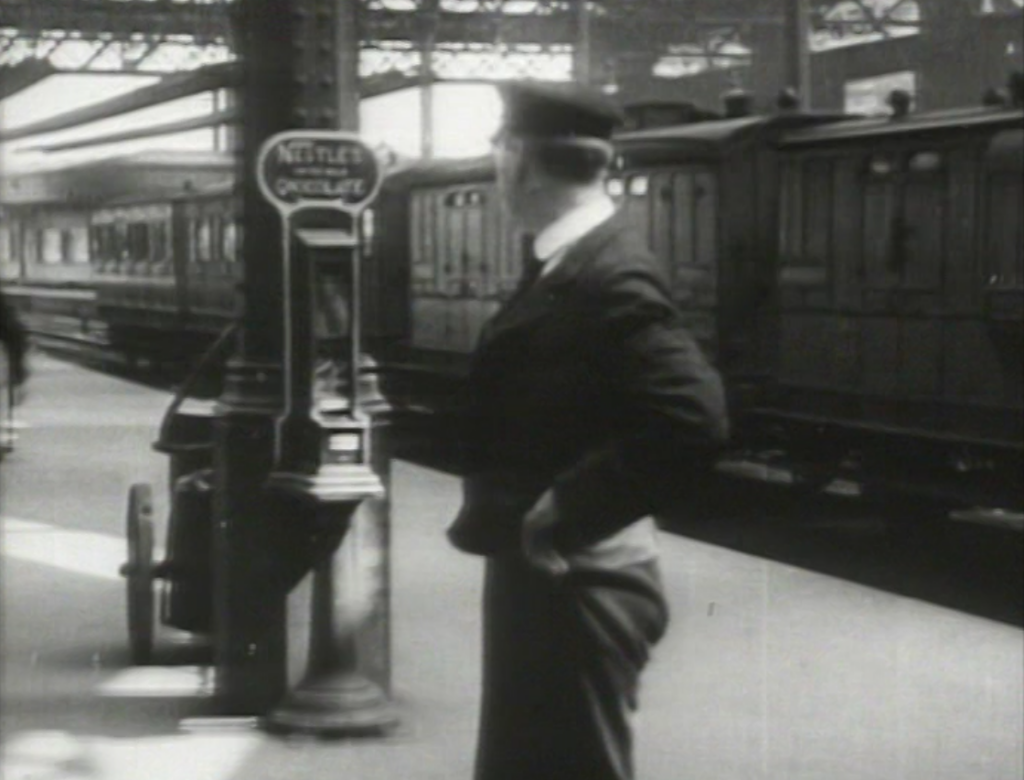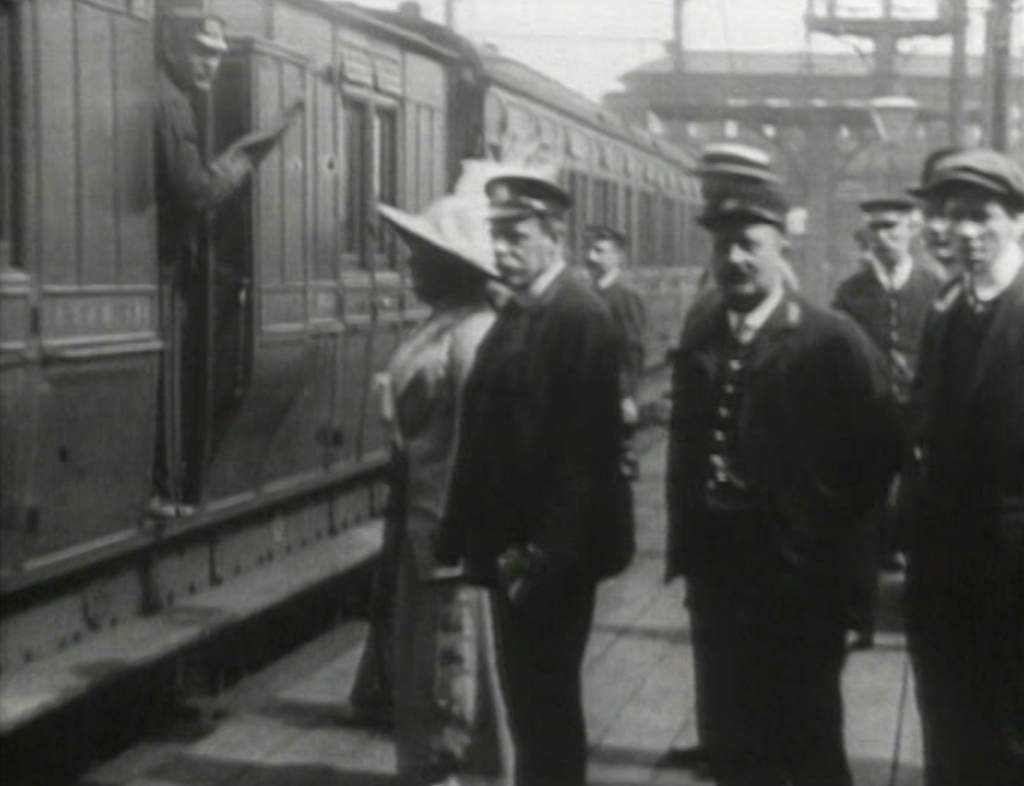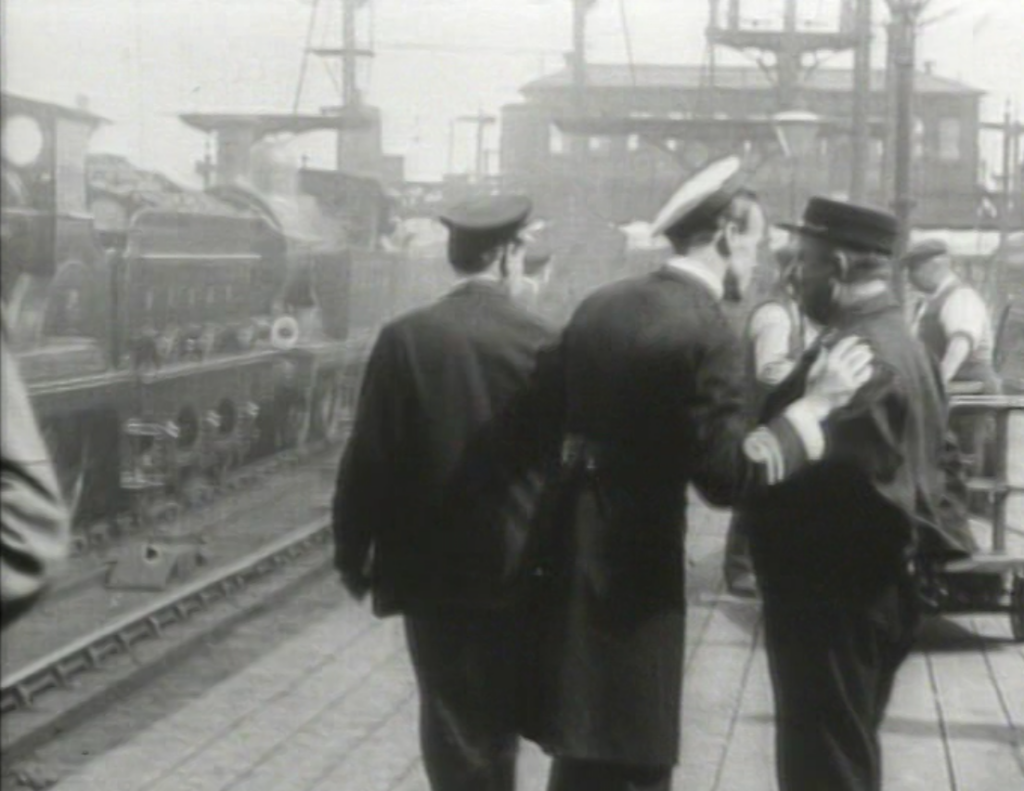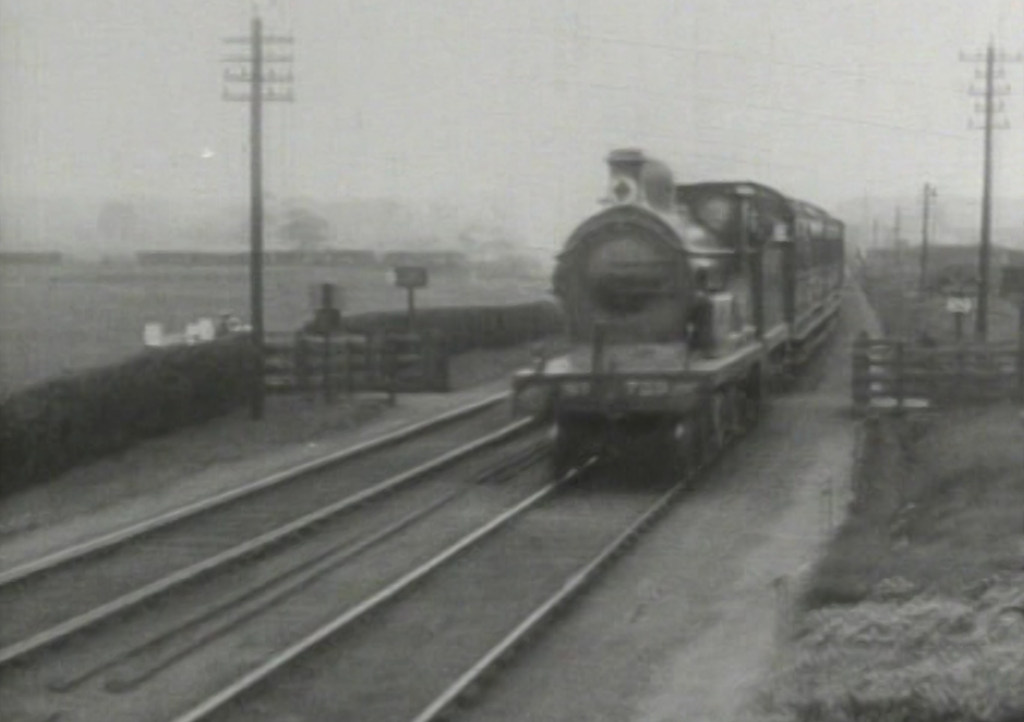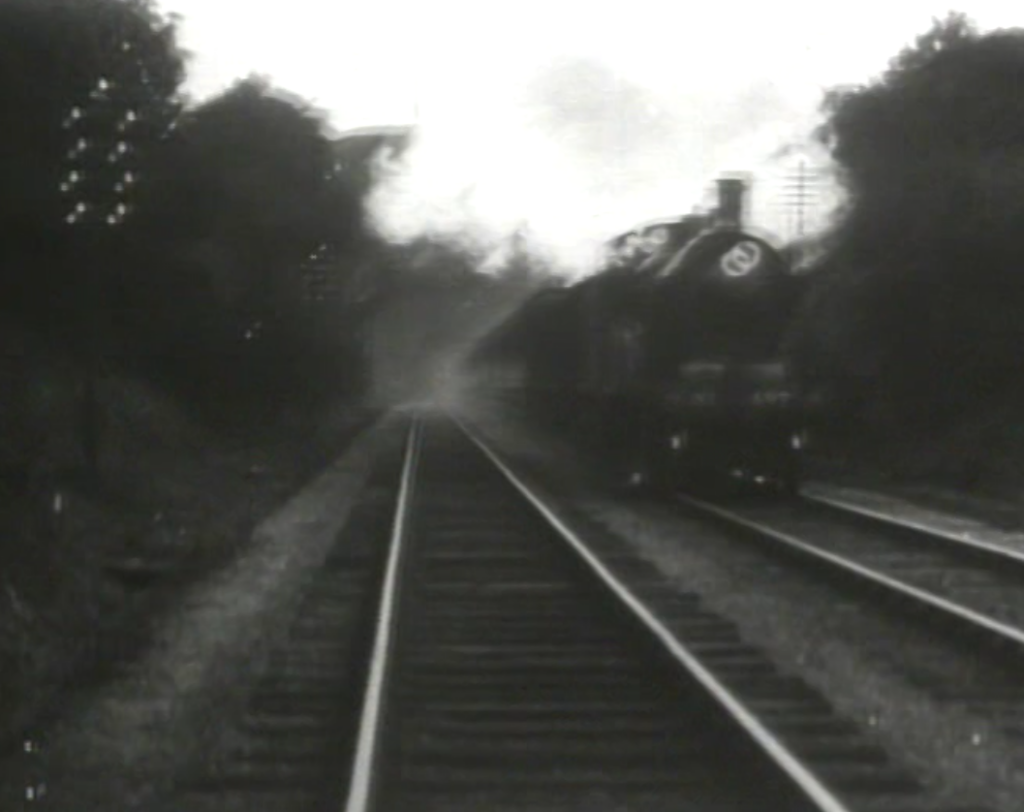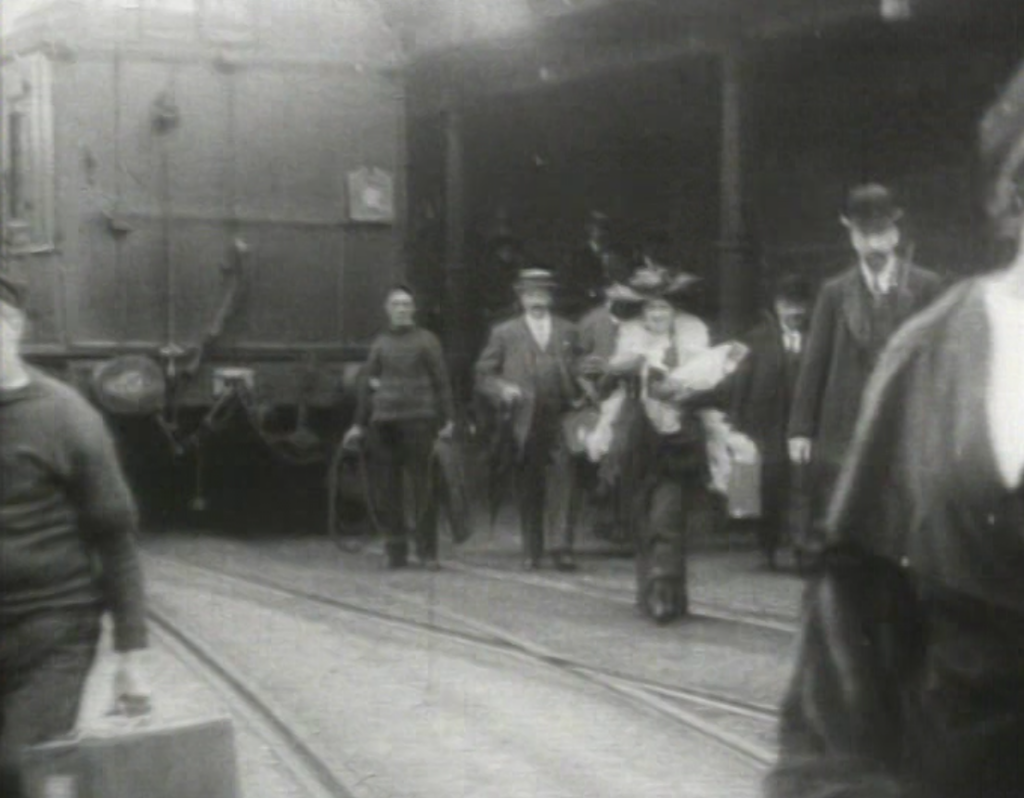
GB
1912
14 mins
Dir: Henry Oceano Martinek
Starring: Percy Moran and Charles Raymond
The intrepid Lt Daring manages to arrange the capture of two foreign spies who have stolen secret plans
Lieutenant Daring (1912-14), like Lieutenant Rose (1910-1915), was an action-adventure series featuring a dashing naval hero, produced by series specialists B&C (British & Colonial). Lieutenant Daring was one of the most successful British series of the silent period, numbering 13 short episodes in total. Both Rose and Daring are naval officers whose job it is to protect the nation from foreign threat, most frequently in the form of spies or anarchists. While many of the films link this threat to concerns about the British Empire, for example Lieutenant Daring Quells a Rebellion (1912) or Lieutenant Rose R.N. and the Boxers (1911), Lieutenant Daring and the Plans of the Minefields concentrates on a threat from Europe, which anticipates the build-up of tension that would soon develop into the First World War. The specifics of the threat in any one episode are usually arbitrary; in this case a French spy steals a vital set of plans, interestingly by drawing them on his female assistant’s body (how risque was that for 1912!). Most of the narrative is devoted to Daring’s pursuit of the woman and the plans. The spies make their getaway by train from London Charing Cross station and there is a good shot of them boarding a SECR 1st Class carriage. As the train pulls out an SECR F1 Class 4-4-0 is revealed with an unidentified 0-4-4T behind. There is a shot of a train passing behind SECR D Class 4-4-0 No.729, the stock for which includes a couple of early Pullmans and an odd little luggage van at the rear, another unidentified 4-4-0 on a train near Folkestone (this time with three Pullmans in the consist) and a scene at Folkestone Harbour station, with the rear end of a coach visible. The complex chase scene continues on the other side of the channel in Boulogne having made extensive and striking use of location shooting. What is most remarkable about this chase is the variety of vehicles it employs: train, motorbike (very rare for the time), horse, car, biplane (in this case an original Bristol Boxkite) and boat, and this all leads to a wonderful historic account of technology that at the time had aesthetic appeal through speed and modernity. The railway footage can be found on Video 125’s Trains from the Arc’ DVD and the footage of the Bristol Boxkite can be viewed on the Bristol Aeroplane Company website.
